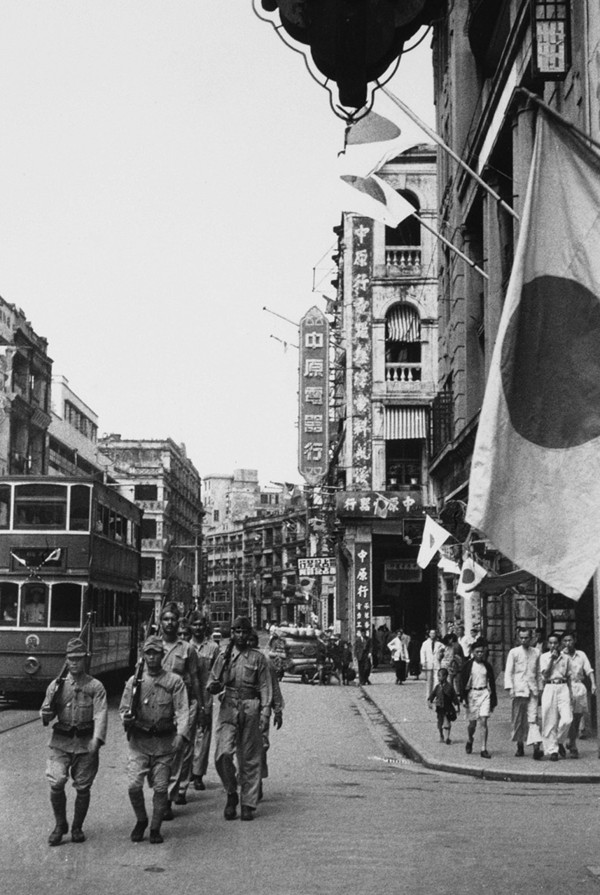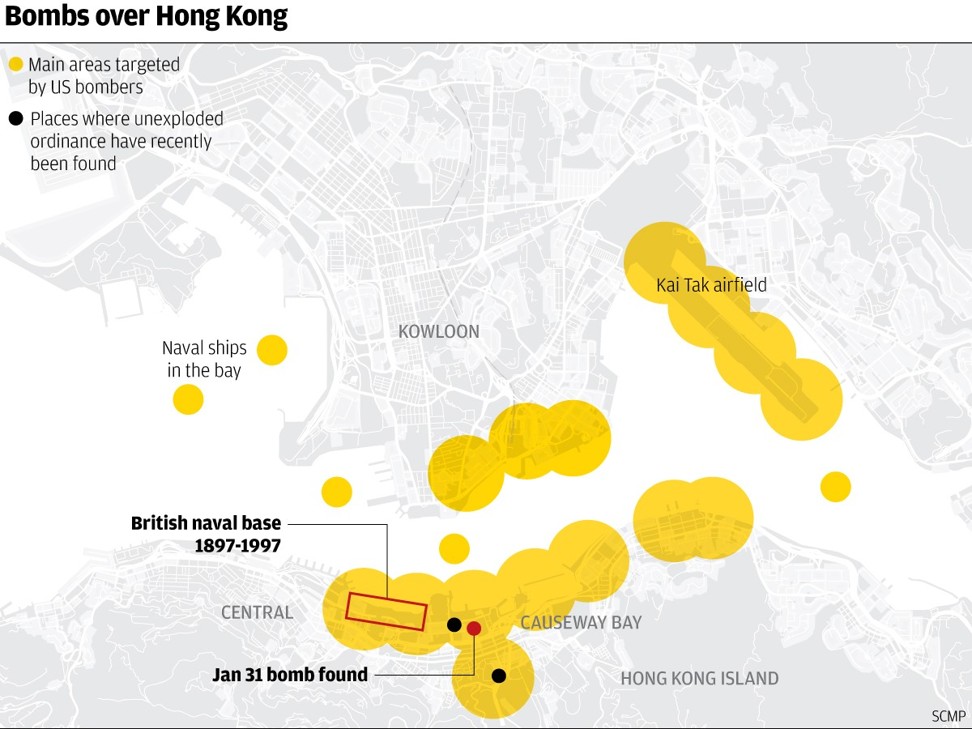How did two American-made bombs from the second world war end up in a Hong Kong subway construction site?
US planes repeatedly struck shipping and docking facilities along the northern coastline of Hong Kong Island during the Japanese occupation, says a military historian

The discovery of two unexploded American-made wartime bombs just 10 metres (33 feet) apart from each other at a construction site near the northern coastline of Hong Kong Island has fuelled interest in how the devices ended up there.
Both were huge, weighing 450kg each (1,000 lbs) and confirmed to be the American-made AN-M65 explosive.
According to police, they were likely dropped by US warplanes during the Japanese occupation of Hong Kong, which lasted from January 1942 to August 1945.
Workers discovered the first device on Saturday and the second device on Wednesday at the building site for the Sha Tin-Central rail link in Wanchai, near the junction of Tonnochy Road and Convention Avenue.
Military historian Dave Macri said he suspected the bombs landed so close together because of the “dive bombing tactic” widely adopted by US Navy aircraft during the war.
For each attack, a squadron of six to 10 bomber aircraft would dive towards the target, descending quickly from a height of about 3,000 metres (10,000 feet) to 600 metres (2,000 feet) and dumping bombs when they were at the low point.
It was “almost like a train” of explosives being dropped, the Hong Kong University professor said, adding: “One [bomber] would come in, and would immediately be followed by another one.”
At a lower altitude, pilots would be able to identify their targets more accurately and have more success at blowing them up. It is a possible explanation of why the two devices were unearthed so close to each other, Macri said.
During the second world war, Victoria Harbour – between Hong Kong Island and the Kowloon Peninsula – was heavily bombed by US forces trying to crush the Japanese military’s shipping and docking facilities.
Admiralty, next to Wan Chai district on Hong Kong Island, was a major target as the British Royal Naval base taken over by the Japanese was located there, according to history professor at Baptist University Kwong Chi-man.
Kwong said: “It was a popular target. Brothels and barracks for the Japanese navy could be found there.”

He described the AN-M65 as a “general purpose bomb for ‘soft’ targets such as infrastructure and unarmoured ships”.
“They were ideal for destroying things such as barracks and warehouses,” he said, adding that medium and heavy bomber planes were each able to carry and drop several bombs.
If an AN-M65 exploded, senior bomb disposal officer Tony Chow Shek-kin said it could have sent shrapnel flying up to 2km away, with the impact being felt within a 200-metre to 300-metre radius.
But these latest discoveries are not the biggest bombs found in the city. In February 2014, a 907kg (2,000 lbs) AN-M66 bomb was discovered on a construction site in Happy Valley. More than 2,000 people were evacuated from nearby buildings during disposal operations.
Unlike those found closer to the coastline, Macri said unexploded munitions found inland on Hong Kong Island would possibly be from Japanese troops during the Battle of Hong Kong in December 1941, when they launched a fierce attack on the city.
